Supply Chain Economics: How Generic Drug Distributors Achieve Efficiency Amid Price Pressure
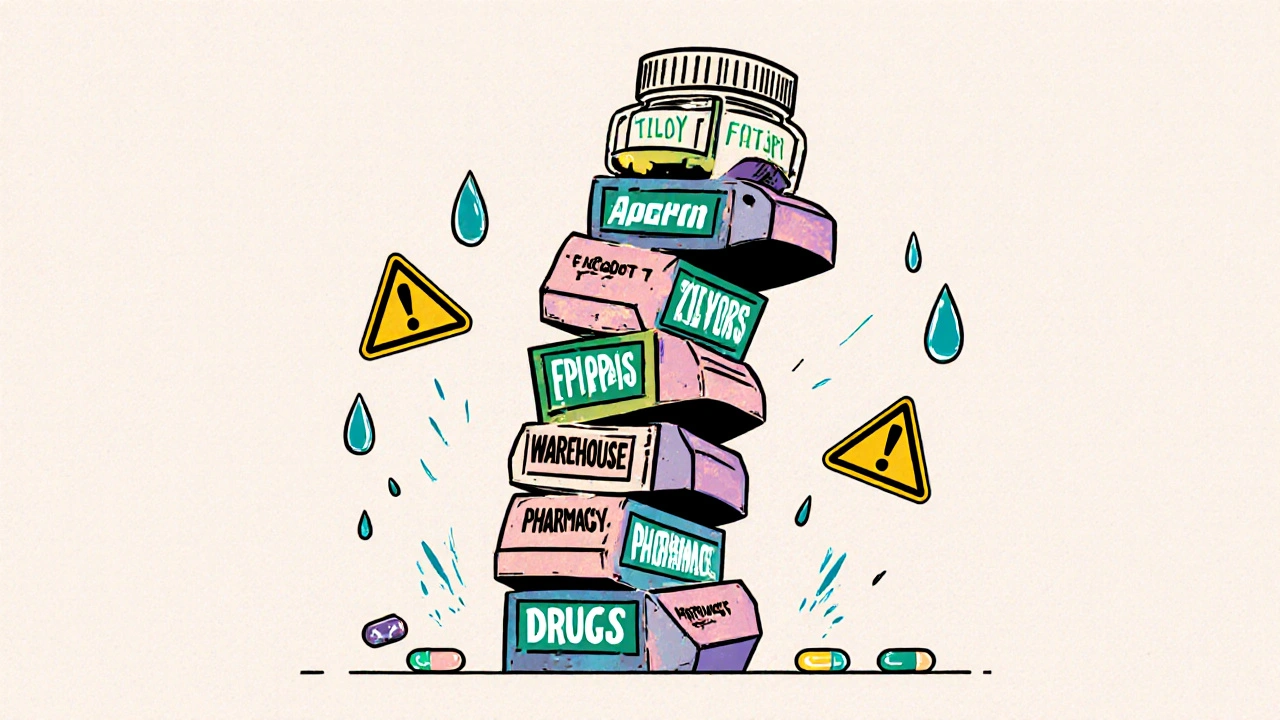
When you pick up a generic pill at the pharmacy, you probably don’t think about how it got there. But behind that $5 bottle of metformin or lisinopril is a supply chain under extreme stress. Generic drug distributors are caught in a trap: they must keep prices low to stay competitive, but the thinner the margin, the more fragile the system becomes. In 2023, the average EBITA margin for generic pharmaceutical distributors was just 8%. That’s less than half what it was in 2018. And yet, 73% of drug shortages happen in low-priced generics-not the expensive branded ones. Why? Because efficiency isn’t just about cutting costs. It’s about building resilience into a system designed to run on pennies.
The Affordability Paradox in Generic Drug Distribution
The core problem is simple: the cheaper a generic drug is, the less money manufacturers have to invest in backup systems. When a company sells a tablet for 10 cents, it can’t afford to keep extra inventory, redundant suppliers, or temperature-controlled warehouses everywhere. So they cut everything to the bone. That’s fine until something breaks-like a factory shutdown in India, a port strike in Rotterdam, or a sudden spike in demand after a new FDA approval. Eighty percent of the world’s active pharmaceutical ingredients (APIs) come from just three countries: China, India, and the EU. That concentration creates a single point of failure. In 2022, a single manufacturing facility in China halted production of a common antibiotic. Within weeks, hospitals across the U.S. were rationing doses. The drug cost 12 cents a pill. No one thought it was worth investing in a second supplier. This isn’t bad management. It’s economic logic. But logic doesn’t protect patients. The result? Stockouts. Delays. And worse-patients skipping doses because their medication isn’t available. Distributors who ignore this paradox lose trust. Those who fix it gain market share.How Top Distributors Measure Efficiency
Efficiency in generic distribution isn’t about moving boxes faster. It’s about moving the right boxes, at the right time, with zero errors. Leading companies track three key metrics that most still ignore. First is Overall Equipment Effectiveness (OEE). It’s calculated as Availability × Performance × Quality. Top performers hit 85% or higher. The industry average? 68%. That 17-point gap isn’t about machines. It’s about maintenance schedules, operator training, and real-time defect detection. One distributor in Ohio reduced waste by 31% after installing sensors that flagged temperature deviations during packaging-something that used to be caught only after the shipment left the warehouse. Second is Perfect Order Percentage. This multiplies four factors: on-time delivery, complete orders, undamaged goods, and correct documentation. A score of 95%+ is the new target. Most distributors hover around 80%. Why? Because one missing label, one late invoice, or one damaged box can delay an entire hospital order. In 2023, Cardinal Health improved its perfect order rate from 81% to 94% by automating documentation checks-cutting manual errors by 70%. Third is customer order cycle time. From the moment a pharmacy places an order to when it’s delivered. Top performers do it in under 24 hours. The average? 72 hours. That’s three days of waiting for a drug a diabetic can’t afford to miss.Inventory Models: Just-in-Time vs. Just-in-Case
The biggest debate in generic distribution is inventory strategy. Two models dominate: just-in-time (JIT) and just-in-case (JIC). JIT means ordering only what you need, when you need it. It slashes storage costs by 22-35%. Sounds perfect. But it also increases stockout risk by 15-20% during disruptions. In 2022, a distributor using pure JIT lost $4.2 million in sales after a supplier’s plant closed for three weeks. They had zero buffer. JIC means keeping extra stock on hand. It raises holding costs by 18-28%, but cuts stockouts by 40-60%. The trade-off? More money tied up in inventory. But for critical generics-like insulin, epinephrine, or antibiotics-that’s not a cost. It’s insurance. The smartest distributors now use a hybrid model. They apply JIT to low-risk, high-volume drugs. For essential ones, they keep a 15% safety stock-even if it means slightly higher carrying costs. A 2023 Supply Chain Dive survey found that 68% of distributors who eliminated all safety stock faced severe shortages within a year. Those who kept even minimal buffers avoided major disruptions.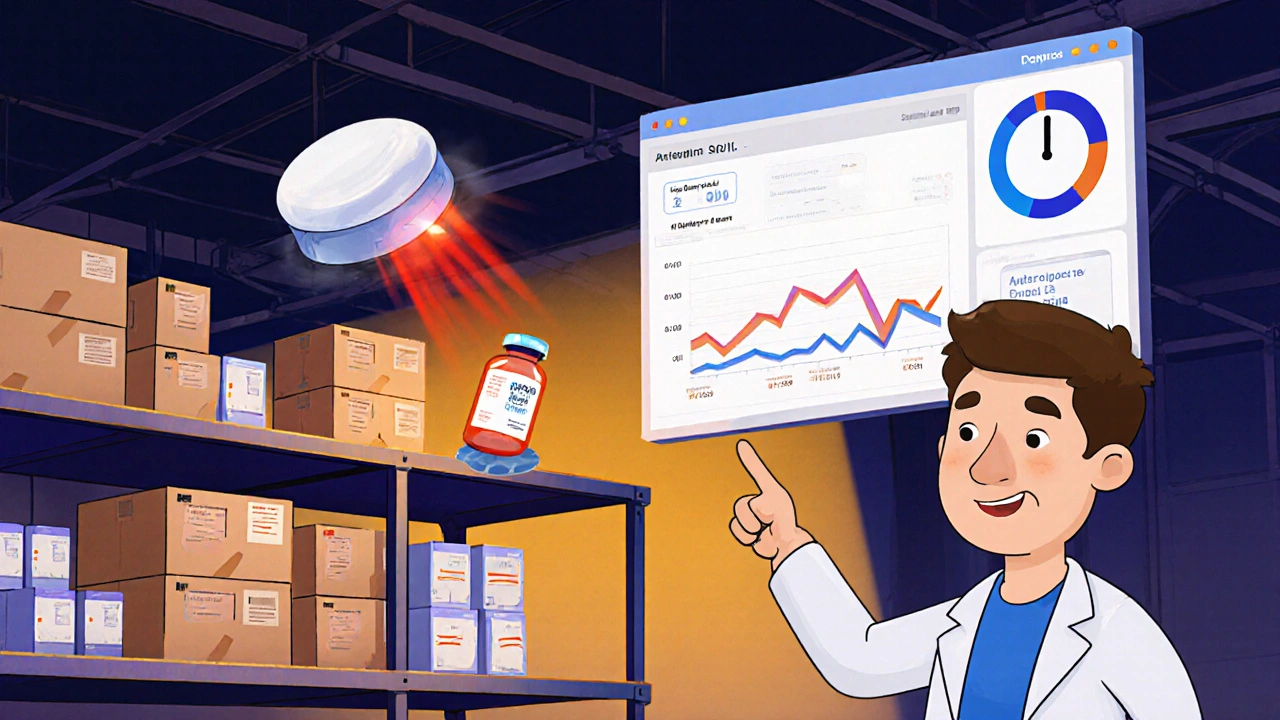
Technology That Actually Works
Technology isn’t magic. But the right tools make the difference between surviving and thriving. Cloud-based ERP systems are now table stakes. They give real-time visibility across warehouses, transport, and suppliers. One mid-sized distributor in Texas saw inventory turnover jump from 7.1x to 11.3x after switching from paper logs to Oracle SCM Cloud. Their stockouts dropped 40%. IoT sensors track temperature, humidity, and shock during transit. Forty-five percent of generic drugs need climate control. A single shipment of insulin that gets too hot can be worthless. One distributor in Florida saved $1.1 million in 2023 by rerouting shipments based on real-time weather data from sensors. But the biggest win? AI-powered demand forecasting. Traditional models used past sales data. That’s like driving a car by only looking in the rearview mirror. AI looks at hospital admission trends, prescribing patterns, insurance claims, and even social media chatter about drug shortages. Teva Pharmaceutical cut forecast errors by 38% in 2022 using machine learning. That translated to a 32% drop in inventory carrying costs. The catch? Implementation is expensive. A full system rollout can cost $20-30 million and take 14-18 months. Smaller distributors can’t afford it. But they don’t need to go all-in. Start with demand forecasting. Then add IoT. Then integrate ERP. Phase by phase.The Hidden Cost of Bureaucracy
Even the best technology fails if the people behind it can’t act fast. A manager at McKesson posted on Reddit in July 2023: “We have AI that predicts a 200% spike in metformin demand next week. But to approve a new order, we need sign-offs from five managers. By the time we get them, the window’s gone.” That kind of delay led to a 22% rise in expedited shipments-costing 3x more than regular freight. Top performers flatten decision layers. They empower warehouse leads to approve emergency orders up to $50,000 without going through five layers of management. They set clear thresholds: if demand spikes 30% above forecast, trigger an automatic reorder. No approval needed. This isn’t chaos. It’s control with speed. One distributor in Ohio cut its approval cycle from 72 hours to 4 hours. Their stockout rate dropped by 52%.
Regulations Are Making Efficiency Non-Negotiable
The FDA’s Drug Supply Chain Security Act (DSCSA) requires full electronic traceability of every drug package by 2023. The EU’s Falsified Medicines Directive does the same. That means every bottle, every box, every pallet must be digitally tracked from factory to pharmacy. That’s not optional. It’s a legal requirement. And it’s expensive-adding 5-8% to operational costs. But it’s also an opportunity. Companies that built traceability systems early now use that data to predict demand, spot counterfeits, and optimize routes. One distributor in Pennsylvania reduced returns by 30% after identifying a pattern: certain batches from one supplier kept getting flagged for “unverified packaging.” They switched suppliers-and saved $2.4 million a year.Who’s Winning-and Who’s Falling Behind
Three companies control 85% of U.S. generic distribution: McKesson, AmerisourceBergen, and Cardinal Health. They’re not winning because they’re bigger. They’re winning because they’re faster. Cardinal Health invested $150 million in AI forecasting in 2022. In 2023, they gained 3.2% market share. Meanwhile, smaller distributors with legacy systems and no analytics lost 3-5% each year. The gap isn’t closing. It’s widening. Top quartile distributors now hit 9.2% EBITA margins. Bottom quartile? 6.8%. That 2.4-point difference is $120 million in profit for a mid-sized player. It’s the difference between surviving and being bought out. The MIT Center for Transportation and Logistics predicts that by 2027, the most efficient distributors will run digital twins of their supply chains-virtual models that simulate every possible disruption before it happens. They’ll forecast demand at 95% accuracy and cut inventory costs by half. If you’re not moving in that direction, you’re not just falling behind. You’re becoming irrelevant.What You Can Do Right Now
You don’t need a $30 million budget to start improving. Here’s what works:- Start with demand forecasting: Use free tools like Google Trends or public hospital data to spot rising demand before your sales team does.
- Keep a 15% buffer for critical generics: Insulin, epinephrine, antibiotics, blood thinners. Don’t be the one who runs out.
- Automate documentation: One PDF template that auto-fills shipping labels and invoices cuts errors and saves hours.
- Reduce approval layers: Give your warehouse manager authority to reorder up to $25,000 without waiting.
- Track OEE and perfect order rates: If you’re not measuring them, you’re flying blind.
8 Comments
Ron and Gill Day
This whole article reads like a consulting deck sold to pharma execs who think they’re innovating by using Excel. 8% EBITA? That’s not a problem-it’s a feature. If you’re running a business on pennies, you deserve to collapse when a single factory in China sneezes. Stop pretending this is a ‘system failure.’ It’s capitalism doing exactly what it’s supposed to do: optimize for profit, not patient lives.
And don’t give me this ‘resilience’ nonsense. Resilience costs money. And money? That’s the one thing generic drug companies aren’t allowed to have. So stop romanticizing ‘hybrid inventory models.’ Just raise prices. Or shut down. Either way, less noise, less hypocrisy.
Also, AI forecasting? Cute. But if your ERP system can’t handle a 30% demand spike without five sign-offs, your problem isn’t tech-it’s management that’s terrified of responsibility. Fix the people first. Then maybe we’ll talk about sensors.
And for the love of god, stop quoting Cardinal Health like they’re saints. They’re just the biggest predator in a graveyard. They don’t ‘win’-they buy the corpses and rebrand them as ‘efficiency.’
Alyssa Torres
Okay but-can we just pause for a second and appreciate how terrifying this is? 🫠
Imagine your diabetic parent needs insulin. You go to the pharmacy. The shelf is empty. Not because it’s sold out. Not because it’s expensive. But because someone decided a 12-cent pill wasn’t worth keeping extra stock for. That’s not a supply chain issue. That’s a moral failure dressed up as economics.
And the fact that we’re talking about ‘hybrid inventory models’ like it’s some genius business hack? No. It’s just admitting we’ve been playing Russian roulette with people’s lives for a decade.
I work in public health. I’ve seen kids miss school because their asthma inhaler was ‘on backorder.’ I’ve held hands in ERs while nurses begged distributors for a single vial of epinephrine. This isn’t a case study. It’s a crisis. And if your solution is ‘phase in IoT sensors’… you’re missing the point.
We need policy. We need regulation. We need to treat essential meds like water or electricity-not commodities to be squeezed dry.
Also, thank you for writing this. Someone needed to say it out loud.
Summer Joy
OMG I’m literally crying 😭😭😭
So like… this whole thing is just capitalism being a greedy gremlin? And the FDA? Just sitting there like ‘yep, traceability’s mandatory now’ while people die? I’m so mad. Like… why is this even a debate? 🤬
Also-did you see that part where they said ‘one missing label can delay an entire hospital order’? That’s not a typo. That’s a death sentence. And someone’s getting a bonus for ‘cutting manual errors by 70%’? Bro. That’s not efficiency. That’s cruelty with a KPI.
And don’t even get me started on ‘AI forecasting.’ AI doesn’t care if your grandma dies because her metformin didn’t arrive. AI just wants to reduce ‘inventory carrying costs.’
Also, why is everyone so nice about McKesson? They’re the Vulture Capital of Pharma. I hate them. I hate all of it. 😤
Also also-can we just make insulin free? Like… just… do it? 🙏
Aruna Urban Planner
The structural vulnerability in generic pharmaceutical distribution stems from the misalignment between cost-efficiency metrics and systemic resilience parameters. The current paradigm prioritizes marginal cost reduction over buffer capacity, leading to high entropy in the supply chain under perturbation.
While JIT models reduce carrying costs by 22–35%, they exhibit high sensitivity to exogenous shocks-particularly in concentrated API sourcing geographies. The concentration index of APIs across China, India, and the EU exceeds 0.85, indicating extreme market power concentration.
Hybrid inventory strategies, when calibrated with criticality thresholds (e.g., ATC classification), can mitigate systemic risk without significantly increasing total inventory costs. The 15% safety stock threshold for Tier-1 essential medicines (e.g., insulin, heparin) is empirically validated in WHO supply chain resilience frameworks.
Moreover, the adoption of digital twin simulations for disruption modeling-though capital-intensive-offers a 3.8x ROI over 36 months when measured in avoided stockout-related morbidity and emergency logistics costs.
Policy intervention must incentivize resilience via tiered margin structures: higher margins for essential generics, lower for non-critical. Market mechanisms alone cannot internalize public health externalities.
Nicole Ziegler
just… imagine your insulin is 12 cents but the warehouse in india has a power outage and now you’re stuck 😭
why are we okay with this? why is this normal?
also can we just… make all essential meds have a 15% buffer? like… it’s not that hard? 🤷♀️
also i’m so tired of hearing ‘it’s economic logic’-no, it’s just lazy logic. we’re talking about people’s lives here.
also also-why does no one talk about how the FDA is basically a cheerleader for this whole mess? 🙄
Bharat Alasandi
Bro, I work in a small pharmacy in Mumbai, and we get these generics from the same distributors. The thing is-most of these companies don’t even know what’s in stock until the pharmacy calls them. No tracking. No alerts. Just… hope.
And yeah, AI forecasting? Sounds cool. But here? We don’t even have internet in half the warehouses. So what do we do? We call the guy who brings the truck every Tuesday and beg him to bring extra.
But you know what works? Keeping a little extra of the stuff that kills you if you miss a dose. We do it. Even if it means we lose 5% profit on insulin. Better than burying someone.
And yeah, bureaucracy? Oh man. We have 3 people signing off on a 500-pill order. Takes 3 days. By then, the patient’s already gone to the black market.
Fix the people. Not the software. The software’s just a mirror.
Kristi Bennardo
This article is dangerously naive. You present these systemic failures as if they are unintended consequences of market forces. They are not. They are the direct result of regulatory capture, antitrust inaction, and the deliberate erosion of public health infrastructure in favor of shareholder value.
The fact that 85% of APIs originate from two foreign nations is not an accident-it is the outcome of decades of offshoring policies designed to maximize corporate profit at the expense of national security. The FDA’s DSCSA is a band-aid on a hemorrhage.
And let’s be clear: the ‘top performers’ you praise-Cardinal, McKesson, AmerisourceBergen-are not heroes. They are monopolists who have systematically eliminated competition, consolidated distribution, and then blamed ‘market dynamics’ for the very collapse they engineered.
There is no ‘efficiency’ here. There is only exploitation. And until we break these monopolies, regulate API sourcing, and mandate strategic stockpiles as a matter of public health law, every ‘perfect order percentage’ is a lie written in blood.
Shiv Karan Singh
Wait, so you’re telling me… people actually believe this stuff? 😂
AI forecasting? IoT sensors? ‘Hybrid inventory’? Bro. You’re all just throwing buzzwords at a problem that’s been solved since 1998: if you want reliable supply, you pay for it.
But noooooo-let’s keep pretending generics should cost $5 while we outsource everything to countries with zero oversight and then cry when the system collapses.
Here’s the real solution: ban all imports of APIs from countries without FDA-equivalent inspections. Force domestic production. Tax the hell out of monopolistic distributors. And make every single pill traceable-back to the farmer who grew the plant.
But nah. Let’s keep pretending tech will fix what politics refuses to touch. 🤡
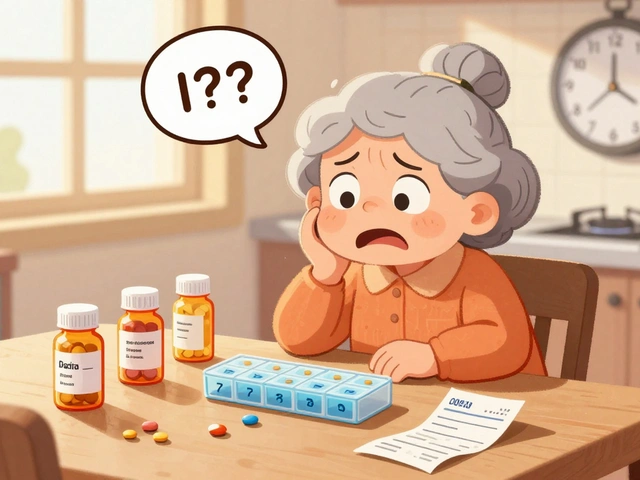
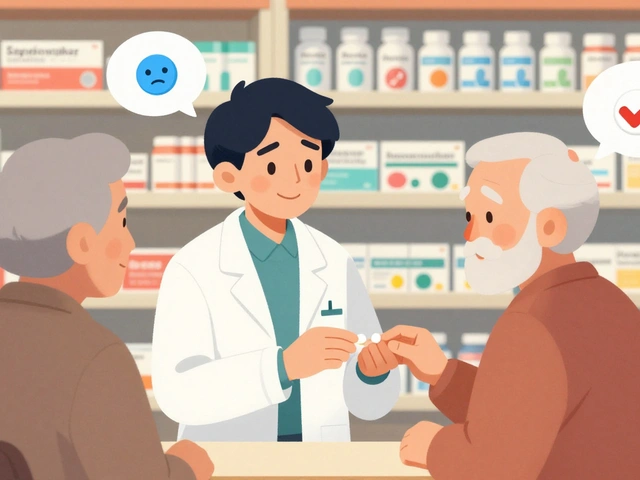


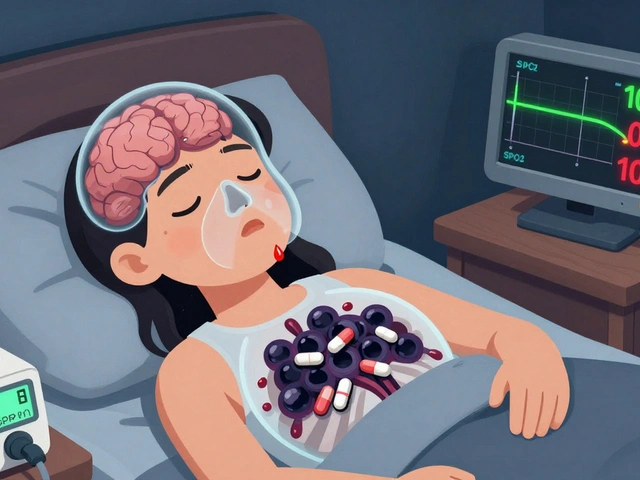

Write a comment